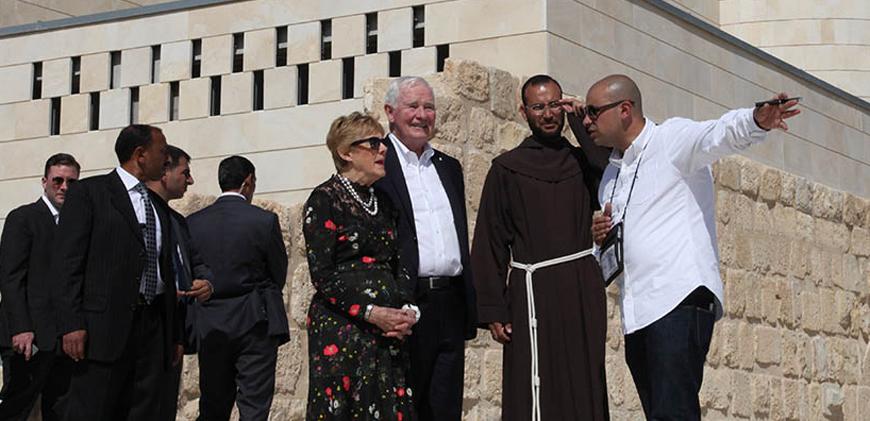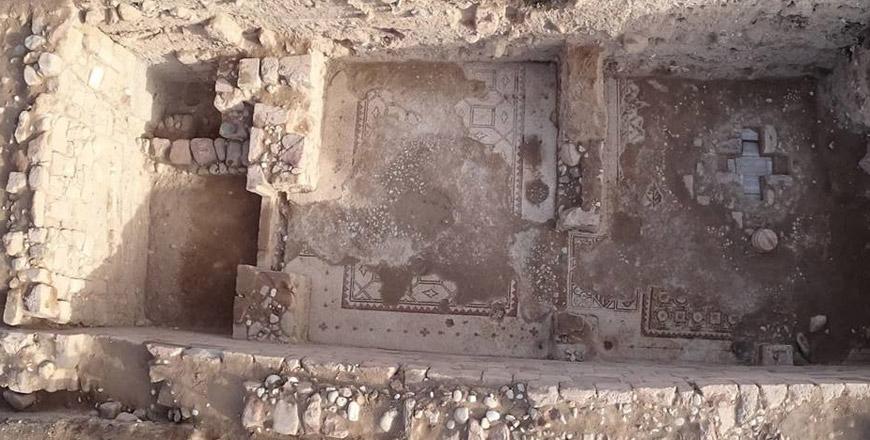You are here
A historical, geographical and spiritual legacy
By Sally Bland - Jan 19,2016 - Last updated at Jan 19,2016

A Healing Journey to the Lowest Point on Earth: The Dead Sea
Oumeish Youssef Oumeish
2015
Pp. 57
“Driven by historical and religious quests, attracted by its curative secrets, and spell-bound by the sunset touching its surrounding hills with ribbons of fire across its salty waters…” (p.3) Thus, Oumeish Youssef Oumeish invites the reader to join his journey to the Dead Sea. Who could resist such an invitation?
Noting that the Dead Sea has “a historical, geographical and spiritual legacy of its own,” (p. 22) Oumeish approaches the Dead Sea from many angles, combining scientific facts, religious references, elegant descriptive prose and spectacular photographs.
As a medical doctor and dermatologist, Oumeish is particularly well-qualified to write about the curative qualities of the Dead Sea, which have been known for over 3,000 years. He explains the chemical composition of the water and atmospheric factors that make the Dead Sea ideal for healing psoriasis, eczema, vitiligo and other skin diseases, as well as bronchial asthma, while the Dead Sea’s black mud can relieve arthritis. “The Dead Sea is one of the most famous sites for climatotherapy. It is the lowest point on earth and the world’s saltiest lake, with its natural elements and minerals in addition to the mud present on its shores, as well as the filtered ultraviolet radiation. All these give the sea its curative powers.” (p. 30)
Geography and geology come into play as Oumeish positions the Dead Sea and Jordan Valley in the context of the Great Rift Valley that extends from East Africa into Syria, and explains their relation to the Huleh Basin, Lake Tiberius, Main and other hot springs nearby. Several pages are devoted to the history of the rock formations present in the area, others to the trees and vegetation typical of the place, and another section outlines the processes involved in the potash industry.
The narrative also deals with this unique natural environment as the site of ancient history and stories related in religious texts, both the Bible and the Quran, beginning with the fate of Sodom and Gomorrah, “the twin cities of sin”. “The destruction of Sodom and Gomorrah according to a geotechnical perspective study, was believed to be the consequence of a seismic event…” (p.4)
Bethany is given even more importance in the book as the site of Jesus’s baptism. “That it occurred on the east bank of the River is an indication that this terrain is an elemental part of the Biblical Holy Lands… one of the three main sites of Christian pilgrimages.” (p. 23)
The book concludes with a page about the climatotherapy available at the Dead Sea Medical Center established at the Spa Hotel in 1990.
The photographs in the book are particularly outstanding, all the more so since many of them show salt and rock formations which are today hard to get a glimpse of, due to the receding of the Dead Sea waters and the transformation of the northeastern shore into a built environment. As Oumeish writes, “The rocks meet [the sea’s] lapping edges, appearing like snow, covered with thick gleaming white deposits that give the area a strange, surreal sense as if of another world. Salt formations along the Dead Sea’s shore with the algae growing on the crumbling rocks, take on the appearance of mushrooms.” (p. 25) Although Oumeish doesn’t mention it--perhaps in his determination to stress the positive qualities of the Dead Sea, it is this “surreal sense of another world” that is being lost in the race for development.
All in all, Oumeish’s book reaffirms what a great asset the Dead Sea and its environs are to Jordan and humanity overall, in terms of health benefits, tourism, industry, agriculture and sites of historical and religious significance. Let us hope that Jordan’s planners work to preserve all these assets.
It is noteworthy that Oumeish dedicated his book to HRH Prince El Hassan Bin Talal in recognition of his leadership role in the scientific and humanitarian fields.
Related Articles
AMMAN — Canada’s Governor General David Johnston and his wife arrived in Amman on Saturday on his first official visit to the Kingdom.
AMMAN — Modern Ghor Safi, located at the southeastern end of the Dead Sea near the lowest point on earth, has been populated for over 12,000
AMMAN — The friends of the Dead Sea Society on Sunday denied news reports claiming that the Dead Sea’s water was polluted due to chemical le



















